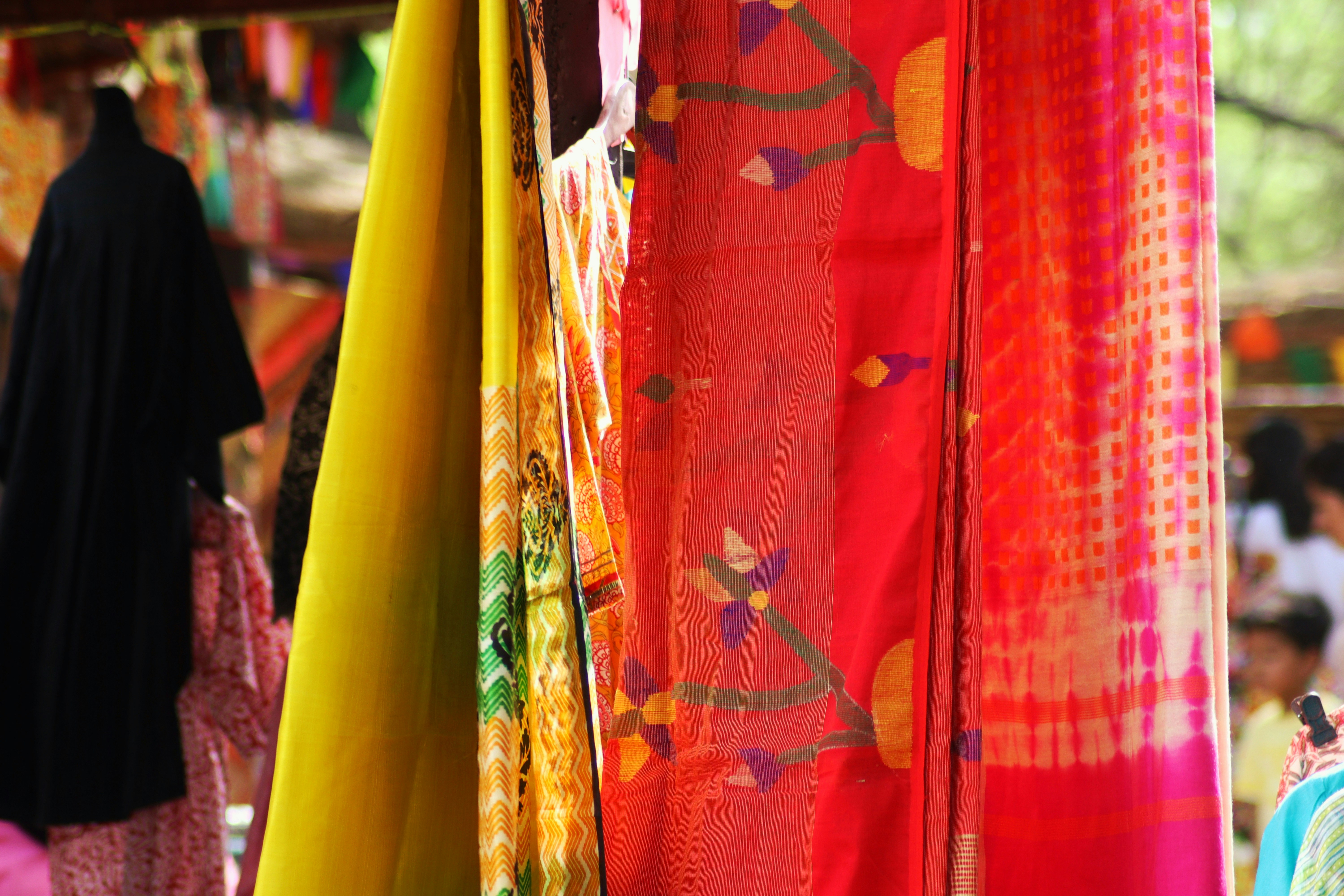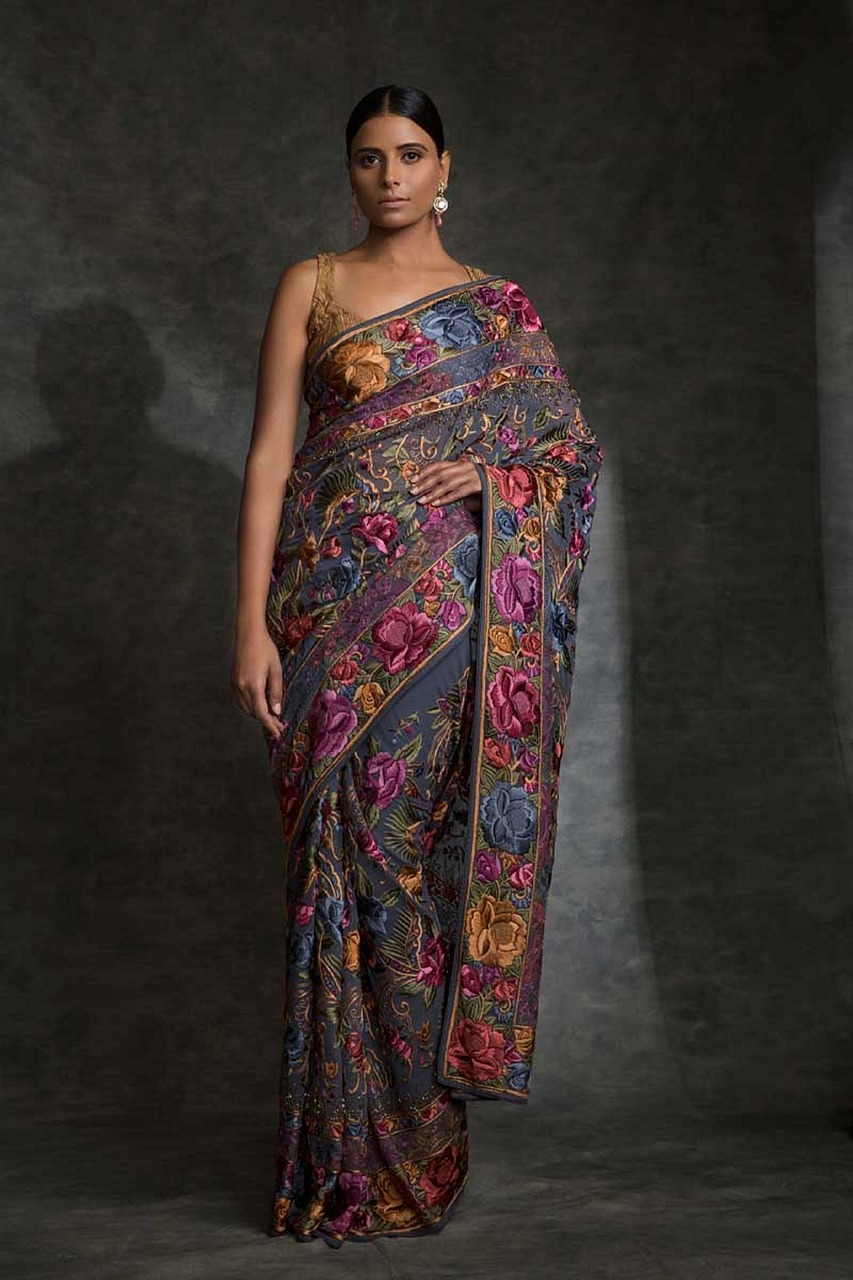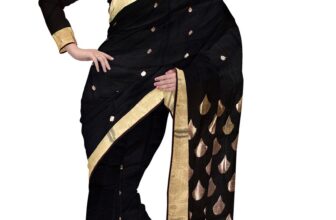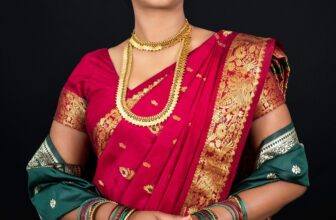
Silk sarees are much more than just exquisite garments; they are a canvas of cultural stories, traditions, and artistry. Worn across India for centuries, these sarees often feature intricate motifs—each carrying unique symbolism and reflecting the heritage of the region they come from. Whether it’s the rich Banarasi silks of Uttar Pradesh or the elegant Kanchipuram silks of Tamil Nadu, motifs tell a tale that blends art, spirituality, and identity.
In this blog, we’ll explore five iconic silk saree motifs and uncover their deep cultural significance.
1. Paisley (Mango or Kairi Motif)
The paisley motif, also called the mango or “kairi” motif in India, is arguably one of the most recognizable and beloved designs in silk sarees.
Origins and Symbolism:
- The motif originated in Persia and made its way into Indian textiles centuries ago.
- Its teardrop shape with a curved upper end is believed to symbolize fertility and the divine feminine.
- In Indian culture, it’s associated with life, growth, and eternity—making it a popular choice for bridal sarees and festive wear.
Regional Use:
- Banarasi silk sarees frequently feature rich, gold-thread paisley motifs woven into their borders and pallu.
- Paithani sarees from Maharashtra also showcase paisleys, often in combination with peacock designs.
Cultural Significance:
- Represents abundance and fertility.
- Seen as auspicious, ideal for weddings and religious ceremonies.
2. Peacock Motif
The peacock is India’s national bird and a symbol of grace, beauty, and pride. Its vibrant feathers and majestic posture make it a favored motif in silk sarees.
Origins and Symbolism:
- The peacock is linked with Hindu mythology, particularly Lord Krishna, who wears a peacock feather on his crown.
- It symbolizes immortality, spirituality, and awakening.
Regional Use:
- Kanchipuram silk sarees often showcase elaborate peacock designs, especially on the pallu and borders.
- Paithani sarees from Maharashtra are famous for their detailed peacock motifs woven in vibrant colors.
Cultural Significance:
- Peacocks evoke festive spirit and celebration.
- They are often worn during weddings, festivals, and religious rituals.
3. Temple Motif
The temple motif features architectural elements inspired by South Indian temple structures—like pillars, arches, and domes.
Origins and Symbolism:
- Originates from Tamil Nadu’s Kanchipuram sarees.
- Represents divinity, protection, and tradition.
- The motifs often depict miniature temples, symbolizing the sacredness of the saree.
Regional Use:
- Kanchipuram silk sarees are renowned for temple motifs on borders and pallus.
- The design is often paired with geometric patterns and floral designs.
Cultural Significance:
- Worn as an emblem of faith and reverence.
- Ideal for religious ceremonies and weddings.
4. Floral Motifs
Floral designs are ubiquitous across Indian textiles, and silk sarees are no exception. They celebrate nature’s beauty and cycles of life.
Origins and Symbolism:
- Flowers symbolize fertility, purity, and beauty.
- Lotus flowers, in particular, are sacred and often used to symbolize spiritual awakening and divine creation.
Regional Use:
- Banarasi silks showcase detailed floral motifs woven with gold zari.
- Mysore silk sarees feature stylized floral patterns inspired by royal gardens.
Cultural Significance:
- Florals convey femininity and grace.
- Frequently chosen for festive and wedding attire.
5. Elephant Motif
Elephants symbolize strength, wisdom, and royalty in Indian culture, making them a powerful motif in silk sarees.
Origins and Symbolism:
- Elephants are associated with Lord Ganesha, the remover of obstacles.
- Represent majesty, power, and good fortune.
Regional Use:
- Temple silk sarees from Tamil Nadu often have elephant motifs along the borders.
- Certain Banarasi sarees also feature regal elephants in their designs.
Cultural Significance:
- Symbol of auspiciousness and protection.
- Often worn during important family and religious functions.
Why Motifs Matter in Silk Sarees
Each motif is not just a design but a story woven with meaning. They:
- Connect wearers to centuries of tradition and craftsmanship.
- Reflect regional identity and cultural heritage.
- Elevate the saree from a garment to a piece of wearable art.
When you wear a silk saree adorned with these motifs, you carry forward a legacy of symbolism and beauty that transcends time.
Caring for Your Motif-Rich Silk Saree
Because silk sarees are precious heirlooms, preserving their motifs requires special care:
- Dry clean only to protect the delicate zari and silk threads.
- Store in cool, dry places wrapped in muslin cloth.
- Avoid direct exposure to sunlight to prevent color fading.
Conclusion
The motifs on silk sarees aren’t just decorative—they’re a language of culture, spirituality, and artistry. From the flowing paisley to the majestic elephant, each pattern is a vibrant thread in the rich tapestry of Indian heritage.
Next time you drape a silk saree, take a moment to appreciate the stories told by its motifs — stories of nature, faith, prosperity, and timeless elegance.
Explore exquisite motif-rich silk sarees at KanchiSilkSarees.com — where tradition meets timeless beauty.






